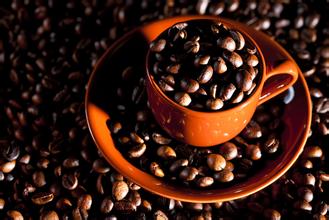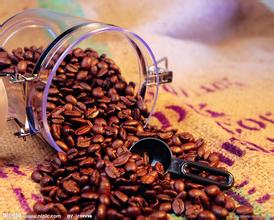Description of roasting degree and Flavor of Sumatran Coffee beans introduction of variety grinding scale by taste treatment method
Sumatra Coffee Bean Roast Degree Flavor Description Taste Treatment Variety Grinding Scale Introduction
Sumatra coffee is one of the world's most mellow and smoothest coffee varieties. Most Sumatra coffees are processed dry, some semi-wet. Most of the coffee labeled "mandelin" comes from the southern interior. Coffee grown in the West is called Gayo Mountain. Sweet and pure manteling coffee: manteling coffee is produced in sumatra, indonesia, asia, otherwise known as "sumatra coffee." Her flavor is very rich, fragrant, bitter, mellow, with a little sweet. Most coffee lovers drink it as a single item, but it is also an indispensable variety for blending coffee.
Sellers often label Lintong Lindong and Mandheling Mandheling coffees as dry processed. In fact, the pulp is often separated from the coffee seeds by a variety of mixing modes, more commonly a backyard wet treatment. Clever farmers put freshly picked coffee cherries into a crude peeling machine assembled from scrap metal, wood and bicycle parts. The peeled, sticky beans are then fermented overnight in plastic woven bags. The next morning, wash off the soft, fermented pulp and stickiness by hand. The silver-coated coffee is pre-dried on a sheet in the front yard and sent to a middleman's warehouse where the silver is removed and further dried. Finally, the coffee is trucked to Medan Port (capital of Sumatra) for the third and final drying. It has also been reported that in other Mandheling regions, after removal of the pericarp, the mucilage is allowed to dry and adhere to the beans, as in Brazil with semi-washing. After that, the dried slime and silver skin are removed by machine. The final drying is the same two-stage drying process, first at the middleman's warehouse and then at the exporter's warehouse in Medan.
Process with Sumatra characteristics. I describe these processes in such detail because it is not clear to what extent soil and atmosphere and unusual treatment techniques and three-stage drying each affect the formation of the characteristics of Linton and Mantenin coffee. Only one thing is certain. These treatments occasionally produce excellent coffee but are also extremely unstable. Only relentless picking in the export warehouse of Medan Port can guarantee the depth of texture and unique, understated richness of Lintong and Mandheling, emerging from the interference of other odors.

Important Notice :
前街咖啡 FrontStreet Coffee has moved to new addredd:
FrontStreet Coffee Address: 315,Donghua East Road,GuangZhou
Tel:020 38364473
- Prev

Tanzania AA Coffee Bean Sieve size characteristics Flavor Description Taste Estate Introduction
Tanzania AA Coffee Bean Sieve size Features Flavor Description Manor Introduction Tanzania's main coffee growing area is located at the foot of Mount Kilimanjaro, which has rich volcanic soil. Coffee trees planted here are more than 100 years old. The earliest coffee was first introduced from Kenya by Christians. Coffee trees must be carefully cared for, weeded and fertilized.
- Next

Description of flavor and taste of Sidamo Lion King Coffee Bean introduction to the production area of grinding scale variety manor
Sidamo Lion King Coffee Bean Flavor description Grinding scale Variety Manor region introduced in 2010 and 2012 continuously won 92 and 94 points from the authoritative American coffee review website Coffee Review. The producing area belongs to volcanic soil with rich nutrients and good drainage. These fertile nutrients are maintained by the degradation of natural organic matter. This batch is located in Dila.
Related
- Detailed explanation of Jadeite planting Land in Panamanian Jadeite Manor introduction to the grading system of Jadeite competitive bidding, Red bid, Green bid and Rose Summer
- Story of Coffee planting in Brenka region of Costa Rica Stonehenge Manor anaerobic heavy honey treatment of flavor mouth
- What's on the barrel of Blue Mountain Coffee beans?
- Can American coffee also pull flowers? How to use hot American style to pull out a good-looking pattern?
- Can you make a cold extract with coffee beans? What is the right proportion for cold-extracted coffee formula?
- Indonesian PWN Gold Mandrine Coffee Origin Features Flavor How to Chong? Mandolin coffee is American.
- A brief introduction to the flavor characteristics of Brazilian yellow bourbon coffee beans
- What is the effect of different water quality on the flavor of cold-extracted coffee? What kind of water is best for brewing coffee?
- Why do you think of Rose Summer whenever you mention Panamanian coffee?
- Introduction to the characteristics of authentic blue mountain coffee bean producing areas? What is the CIB Coffee Authority in Jamaica?

